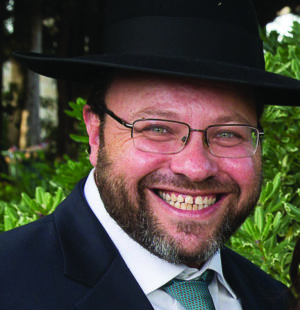Port in a Storm

Akko might still have a reputation as a poor, rundown city, but the magic those old-time conquerors understood is still pounding on the rocks

Photos: Menachem Kalish
"W
hat’s there to see in Akko?”ourists often ask me when I suggest a visit to this very underrated tourist city. The truth is, in the past I would probably have agreed with them — all I knew was that Akko was basically a slum city that really didn’t have much to offer the discerning frum tourist. It was rundown, with lots of mosques and churches and nary a mehadrin restaurant. So this ancient port city, the primary gateway to Eretz Yisrael for millennia — with its rich history, inspiring stories, and ancient cobblestones — patiently waited for her children to return and crown her with the honor and respect she deserves.
Today Akko is doubly recognized as a United Nations Educational, Scientific and Cultural Organization (UNESCO) World Heritage City, one of only a handful of UNESCO’s 1,100 sites worldwide to have that distinction. Israel itself — despite the fact that it’s a living history book — has only eight sites (of which Jerusalem, Chevron, and Kever Rachel are not included, as they are not recognized by the UN as being part of Israel). But UN ratings are not what draw frum tourists — they want history, inspiration, kedushah, and someplace to eat, and Akko has all of that and more.
It’s said that the name of the ancient city, on whose seawall the Mediterranean waves pound and crash, comes from the pasuk in Iyov (38:11) describing either Hashem’s commanding the limits of the ocean, or referring to the Mabul, as the Yerushalmi learns, saying “Ad poh — Until here you may come but no further.” “Ad poh” became the similar “ad koh” and thus, Akko got its name.
When Bnei Yisrael entered Eretz Yisrael, this was meant to be the inherited portion of the Tribe of Asher. Looking around as we enter the city and see the abundant olive trees, one can appreciate the realization of the brachos of Yaakov and Moshe to this shevet — that their bread should be rich with oil and their feet anointed with it. Asher, though, did not conquer this area in the end, and thus its status of kedushah, established by the first conquest in the times of Yehoshua, was unclear. It is for this reason, the Ramban suggests, that Rabi Abba, the great fourth-century Amora, would kiss the rocks of Akko upon arriving here and the Tanaim would depart from one another from this city. This was the gateway to and from chutz la’aretz — the Ellis Island of Eretz Yisrael — and its precious stones evoked the deepest emotions of coming home.
The Protector
Entering the city, you can’t miss the large tel — a hill built on the ruins of a civilization — with the sculpture of a little man with his hand in his vest, riding a horse and wearing a triangular-shaped hat. When I ask school groups who it is, some of the sweet yingelach scream “Haman!” But no, this short would-be world conqueror was none other than Napoleon Bonaparte, who came to Eretz Yisrael in 1799 after conquering Egypt on his path to world domination. After conquering and pillaging Yaffo, Akko was his next stop. For two months he tried to lay siege on the city, and the Ottoman governor, El Jazzar — known as the “Butcher of Akko” for his predilection to ride around the city waving his axe around the heads of his suspected enemies — was terrified. Napoleon’s brutal reputation of decimating his conquered cities preceded him. Yet Jazzar had the benefit of a brilliant Jewish adviser, Chaim Farchi, his right hand-man and one of the most influential Jews in the Middle East at that time (although he lost his left eye, ear lobe, and tip of his nose on one of Jazzar’s rampages). Farchi advised El Jazzar to build a second siege wall within the first one, so that even if Napoleon came through the first, they would hit him off at the second. (Both walls are still standing.) Sure enough, that’s what happened. Napoleon, caught unaware, retreated to Egypt and pretty much threw up his hands at the idea of conquering the Middle East.
Chassidim, of course, attribute the defeat of Napoleon to the merit of the great tzaddik that was caught in the city at the time of the siege. Waiting to sail home to Uman after his eight-month pilgrimage to Eretz Yisrael, Rebbe Nachman of Breslov found himself trapped in the city. Although for many the situation might have seemed hopeless, Rebbe Nachman’s teaching of “ein yeiush ba’olam klal” carried the day.
Oops! We could not locate your form.






